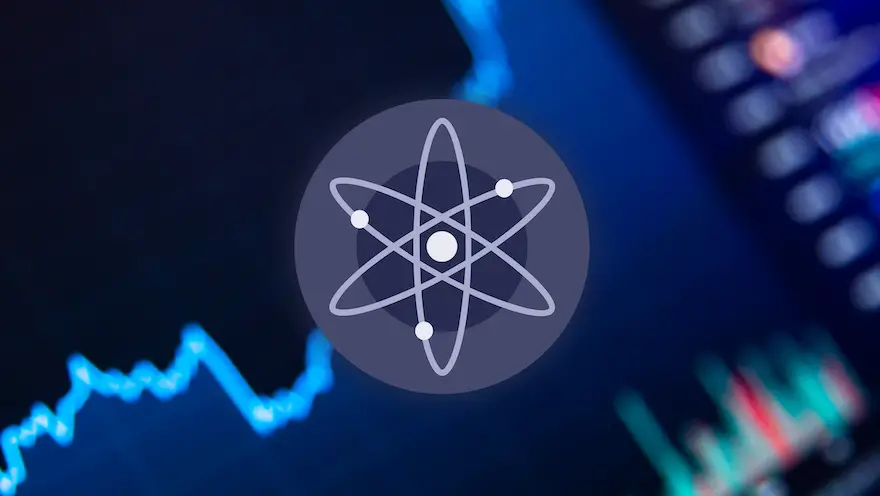Cosmos is a revolutionary project in the world of cryptocurrencies, designed to address many of the challenges faced by blockchain technology today, such as scalability, usability, and interoperability. Often referred to as the “Internet of Blockchains,” Cosmos aims to create a network of interconnected blockchains, allowing them to communicate and exchange information with one another seamlessly. In this comprehensive analysis, we will explore Cosmos, its underlying technology, the native cryptocurrency ATOM, and its potential impact on the blockchain ecosystem.
Section 1: Cosmos Overview
1.1 Background
Cosmos was conceived in 2016 by Jae Kwon and Ethan Buchman, who recognized the need for a more scalable and interoperable blockchain solution. They established Tendermint Inc. to develop the Tendermint Core consensus engine, which eventually became the foundation of the Cosmos Network. Cosmos held its initial coin offering (ICO) in 2017, raising over $17 million. The mainnet was launched in March 2019.
1.2 Vision
Cosmos aims to solve the issues of scalability, usability, and interoperability in the blockchain ecosystem by creating a decentralized network of independent yet interconnected blockchains. By providing a set of tools and protocols, Cosmos allows developers to build and deploy custom blockchains and decentralized applications (dApps) with ease, while ensuring seamless communication and exchange of data between different blockchains.
Section 2: Cosmos Technology
2.1 Tendermint Core
At the heart of Cosmos is Tendermint Core, a Byzantine Fault Tolerant (BFT) consensus engine that provides the necessary infrastructure for building and deploying blockchains. Tendermint Core consists of two main components: the Tendermint BFT consensus algorithm and the Application Blockchain Interface (ABCI). The Tendermint BFT consensus algorithm ensures fast and secure transaction processing, while the ABCI allows developers to build applications in any programming language and easily integrate them with the Tendermint Core consensus engine.
2.2 Cosmos SDK
The Cosmos Software Development Kit (SDK) is a modular framework designed to help developers build customizable, high-performance blockchains with ease. The Cosmos SDK offers a set of pre-built modules, such as governance, staking, and token management, that can be easily combined and customized to create unique blockchains tailored to specific use cases. The modular architecture of the Cosmos SDK simplifies the development process, reduces complexity, and allows for rapid iteration.
2.3 Inter-Blockchain Communication (IBC) Protocol
The Inter-Blockchain Communication (IBC) Protocol is a crucial component of the Cosmos ecosystem that enables seamless communication and exchange of data between different blockchains. The IBC Protocol allows blockchains built using the Cosmos SDK to send tokens and exchange information with one another, effectively creating a network of interconnected blockchains.
Section 3: ATOM – The Native Cryptocurrency of Cosmos
3.1 ATOM Token
ATOM is the native cryptocurrency of the Cosmos Network. It serves multiple purposes within the ecosystem, including governance, staking, and securing the network. ATOM holders can participate in the governance of the network by submitting proposals and voting on various decisions, such as software upgrades and parameter changes. Additionally, ATOM is used for staking, where holders can lock up their tokens to support the network’s security and earn rewards in return.
3.2 Staking and Delegation
To secure the Cosmos Network, validators run nodes that participate in the consensus process. ATOM holders can either become validators themselves or delegate their tokens to validators, effectively lending their tokens to support the network’s security. In return for staking or delegating their ATOM tokens, holders can earn rewards in the form of newly minted ATOM tokens and transaction fees.
Section 4 : Cosmos Ecosystem and Use Cases
4.1 Growing Ecosystem
The Cosmos ecosystem has grown rapidly since its mainnet launch, with numerous projects building on the network and leveraging its technology. These projects span various industries and use cases, including decentralized finance (DeFi), gaming, supply chain, and identity management. Some notable projects in the Cosmos ecosystem are Kava, a DeFi platform; Terra, a stablecoin and payment platform; and Akash Network, a decentralized cloud computing platform.
4.2 Use Cases
Cosmos enables a wide range of use cases, thanks to its modular architecture and the interoperability provided by the IBC Protocol. Some of the most prominent use cases include:
Decentralized Finance (DeFi): Cosmos is well-suited for DeFi projects, as it allows for the creation of custom blockchains with tailor-made financial applications. The IBC Protocol enables seamless integration and interaction with other DeFi platforms, fostering a more connected and interoperable DeFi ecosystem.
Cross-Chain Communication: The IBC Protocol facilitates communication between different blockchains, allowing them to exchange information and value securely. This cross-chain communication can enable complex, multi-chain applications and enhance the overall utility of blockchain technology.
Scalability Solutions: Cosmos’ Tendermint Core consensus engine and modular architecture provide a scalable solution for blockchain projects, allowing them to process transactions more efficiently and handle higher throughput than traditional blockchain networks.
Customizable dApps and Blockchains: The Cosmos SDK allows developers to build highly customizable blockchains and dApps, catering to specific use cases and requirements. This flexibility enables a wide variety of applications and encourages innovation within the ecosystem.
Section 5: Challenges and Criticisms
5.1 Competition
Cosmos faces competition from other blockchain platforms and interoperability solutions, such as Polkadot, Avalanche, and Cardano. While Cosmos offers a unique approach with its focus on modularity and the IBC Protocol, it will need to continue innovating and expanding its ecosystem to maintain a competitive edge.
5.2 Centralization Concerns
One criticism of Cosmos is the potential for centralization among validators. With a limited number of validators securing the network, there is a risk of centralization and collusion. However, the Cosmos governance model allows ATOM holders to vote on proposals and influence the network’s parameters, helping mitigate this concern by distributing power among a broader group of stakeholders.
Conclusion
Cosmos is a groundbreaking project that seeks to address the challenges of scalability, usability, and interoperability in the blockchain ecosystem. Its unique combination of Tendermint Core, Cosmos SDK, and the IBC Protocol enables the creation of interconnected, customizable blockchains that can cater to a wide range of use cases and industries. The native cryptocurrency, ATOM, plays a crucial role in securing and governing the network, ensuring its continued growth and development.
While Cosmos faces competition from other blockchain platforms and must address concerns related to centralization, its innovative approach and expanding ecosystem make it a project with significant potential. As the “Internet of Blockchains” continues to evolve, Cosmos is poised to play a pivotal role in shaping the future of decentralized technologies and fostering greater adoption of blockchain solutions.






